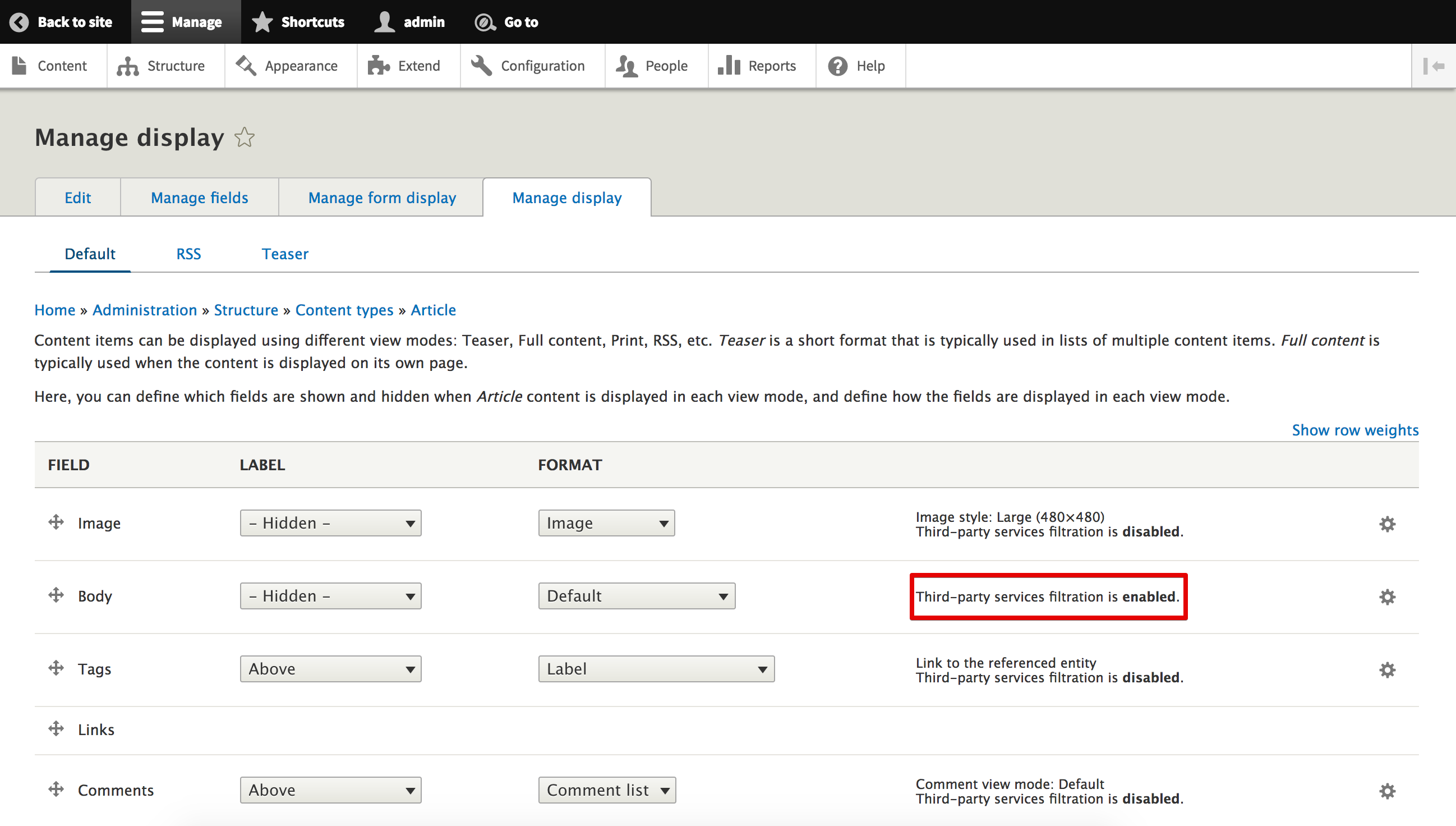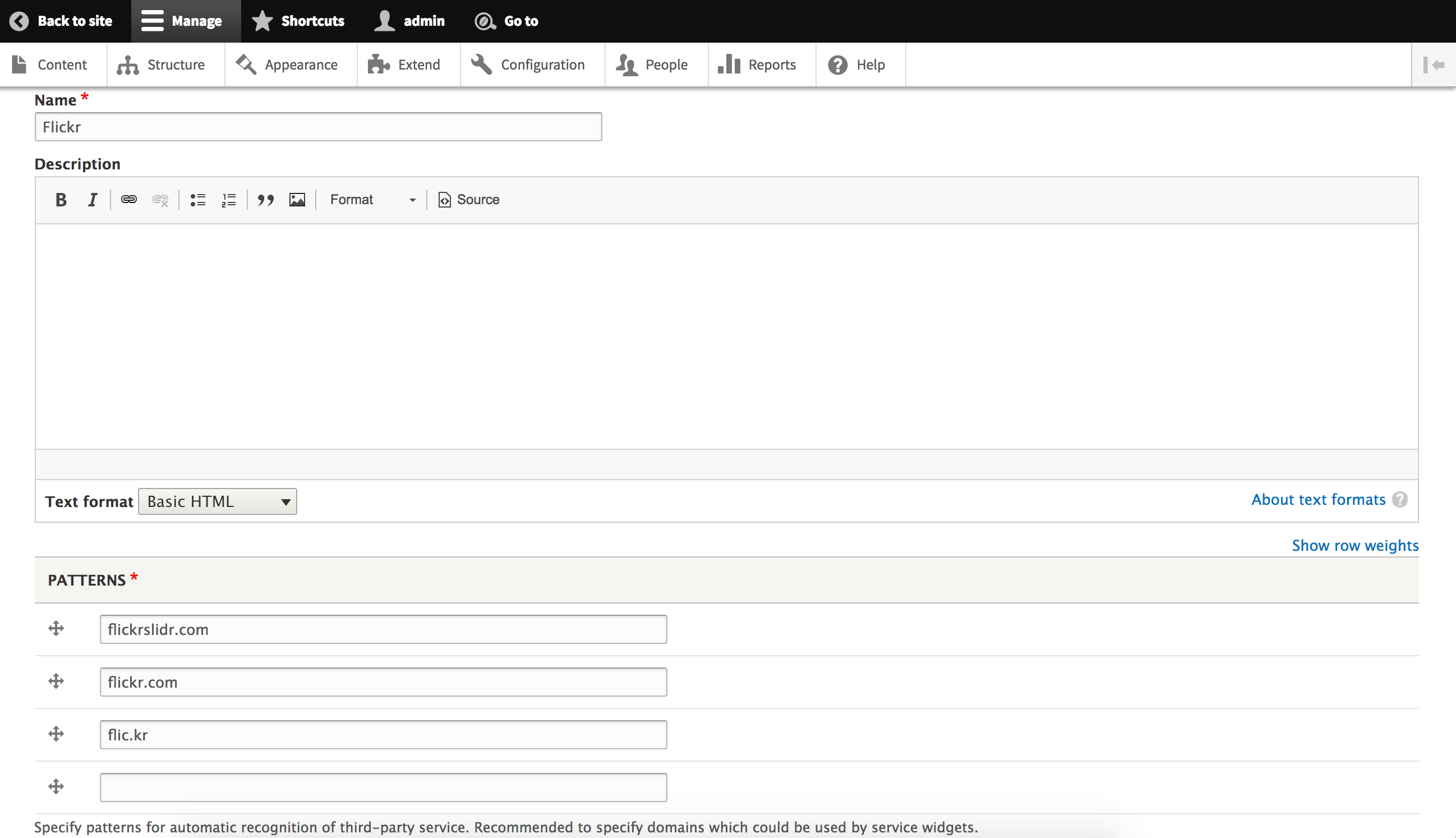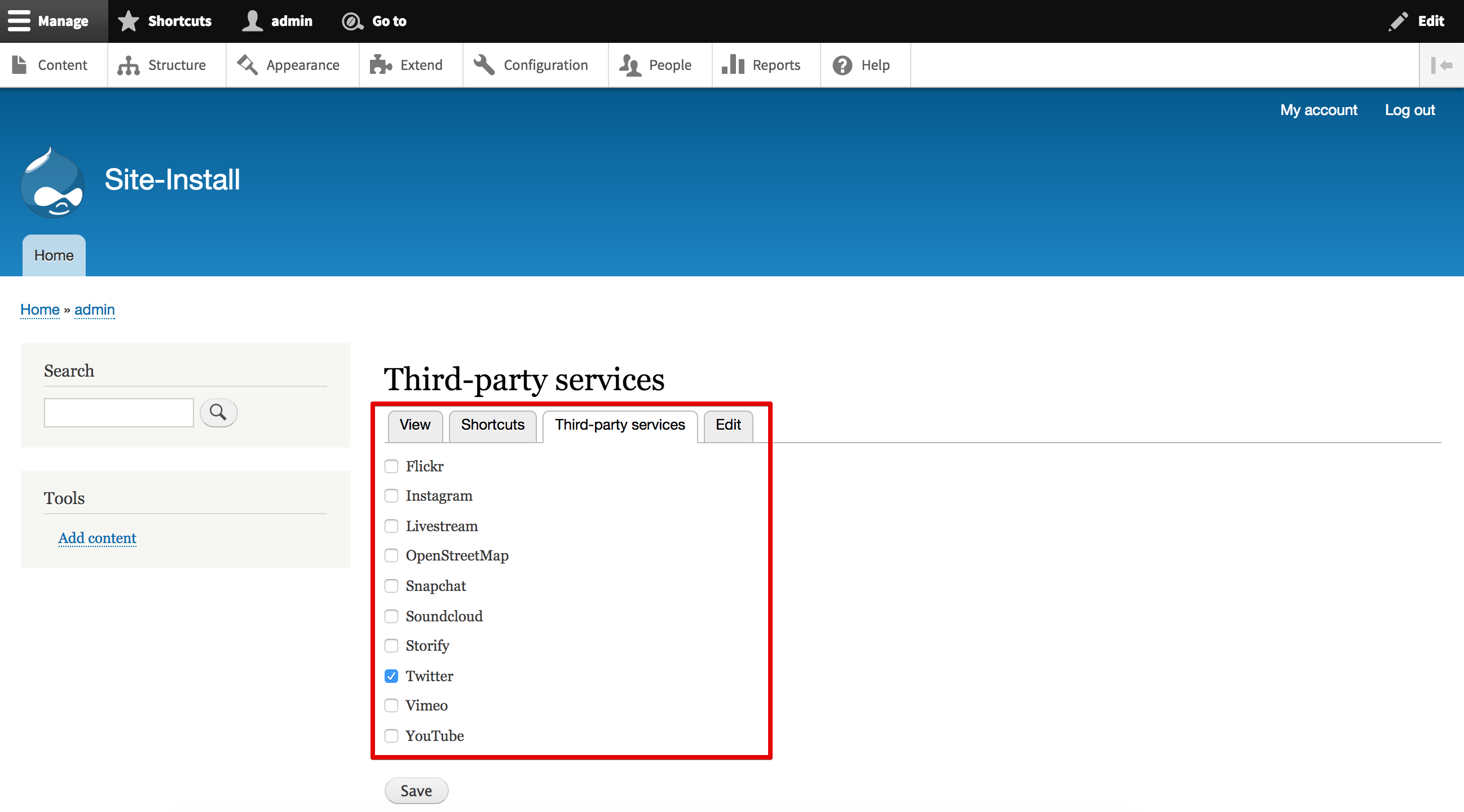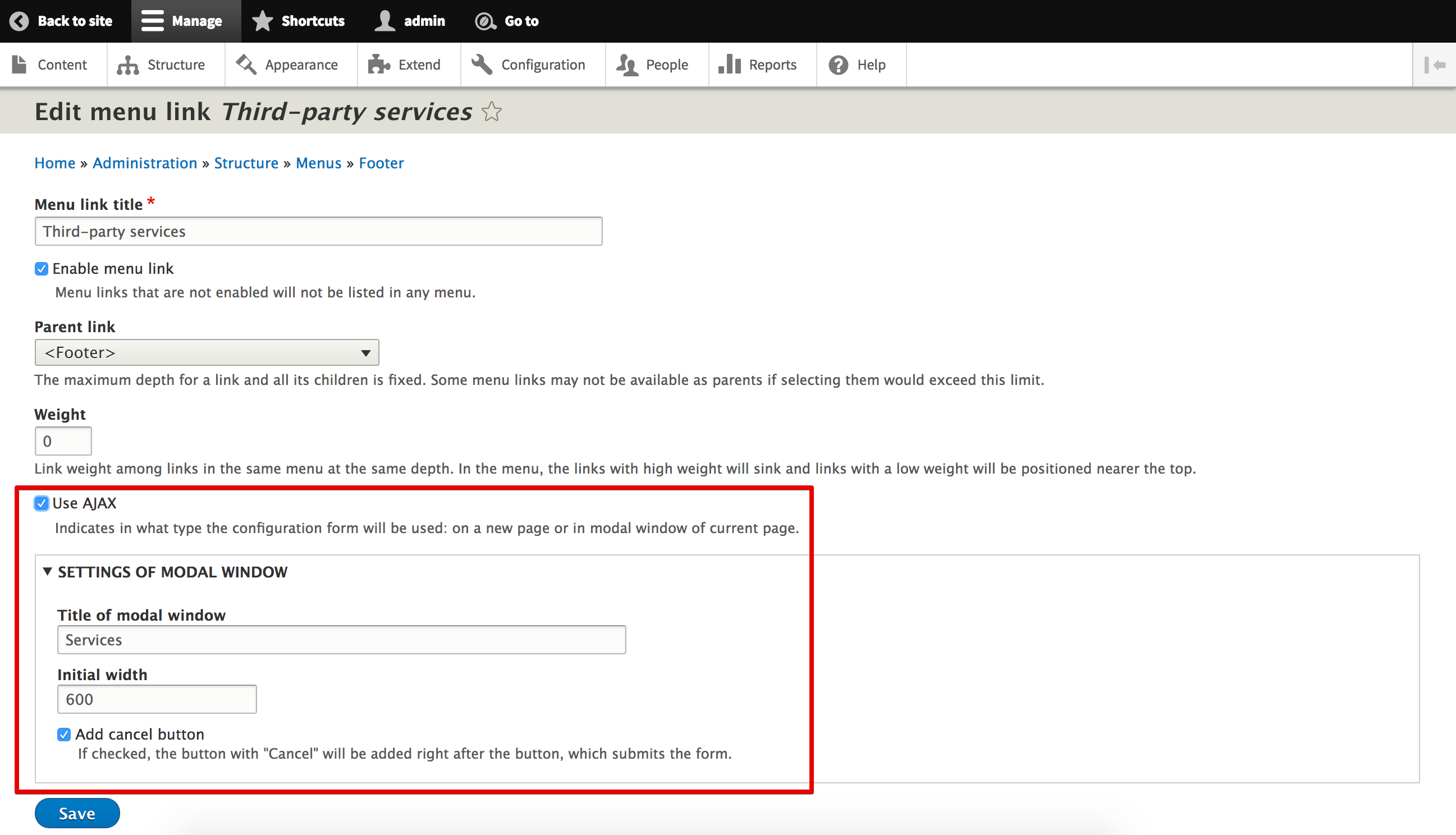 Support for Drupal 7 is ending on 5 January 2025—it’s time to migrate to Drupal 10! Learn about the many benefits of Drupal 10 and find migration tools in our resource center.
Support for Drupal 7 is ending on 5 January 2025—it’s time to migrate to Drupal 10! Learn about the many benefits of Drupal 10 and find migration tools in our resource center.Respect people privacy and let every particular user to decide which external services to be rendered on your pages.
The implementation is frontend-based, so you can safely use this project alongside with caching services, like Varnish or Nginx.
How to use
The main idea of implementation - to process fields and blocks and check their contents for external widgets. How this achieved?
Fields

Third-party services filtering might be enabled for every field.
Blocks
namespace Drupal\MODULE\Plugin\Block;
use Drupal\Core\Block\BlockBase;
/**
* @Block(
* id = "twitter_block",
* admin_label = @Translation("Twitter block"),
* category = @Translation("Social widgets"),
* )
*/
class TwitterBlock extends BlockBase {
public function build() {
$build = [];
$build['content'] = [
'#markup' => '<a class="twitter-timeline" href="https://twitter.com/TwitterDev/timelines/539487832448843776">National Park Tweets - Curated tweets by TwitterDev</a> <script async src="//platform.twitter.com/widgets.js" charset="utf-8"></script>',
];
\Drupal::service('third_party_services.block_optional_render')->process($build, $this);
return $build;
}
}
Must be called manually and programmatically due to only you knows which blocks have to be processed.
What the module provides?
Taxonomy vocabulary

The Third-party services taxonomy vocabulary is a collection of terms, representing third-party services. Every term has Patterns field which should list all possible patterns for markup recognition of third-party service. The following services are provided out of the box: Flickr, Instagram, Livestream, OpenStreetMap, Snapchat, Soundcloud, Storify, Twitter, Vimeo, YouTube. Check out the implementation of third_party_services_install() to understand how to fill the vocabulary programmatically.
Configuration form

Configuration form is available even for anonymous users (settings are stored in localStorage) and lists terms from vocabulary as options to select.
Menu link

By default link is placed into Footer menu (you can change this) and has additional settings for modal window, in which configuration form will be opened (if AJAX enabled, otherwise user will proceed to configuration page).
Templates
Module ships with basic templates for the configuration form and placeholder to show instead of third-party service, which is blocked. You can redefine them in your theme and tweak by desire.
Twig function
third_party_services__configuration_form_url - function can take as much as needed options to configure modal dialog displaying. For now, available options are: dialogClass, addCancelButton and all from http://api.jqueryui.com/dialog.
Example:
<a href="{{ third_party_services__configuration_form_url({width: 600, title: 'Test', addCancelButton: 1}) }}" class="button use-ajax">
{{ 'Provide data protection settings'|t }}
</a>
RawHtmlRenderer service
The third_party_services.raw_html_renderer service may be helpful in case when you need to render standalone block of HTML with styles, scripts and settings included.
LocalStorage AJAX command
Communicate with localStorage from backend.
$response->addCommand(new LocalStorageCommand('setItem', 'key', 'value'));
localStorage.getItem('key') === 'value'
LocationReload AJAX command
Reload current page from JS.
$response->addCommand(new LocationReloadCommand());
Demonstration
Project information
Maintenance fixes only
Considered feature-complete by its maintainers.- Module categories: Content Editing Experience, Access Control, Content Display
- Created by BR0kEN on , updated
Stable releases for this project are covered by the security advisory policy.
There are currently no supported stable releases.











